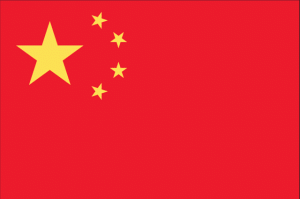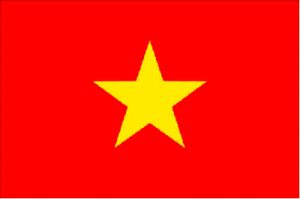Op-Ed Commentary: Chris Devonshire-Ellis
As the IMF recently released a report stating that growth in the United States and the Eurozone is likely to be 3.3 percent and 1.3 percent, respectively, next year – highlighting the continuation of considerable risks – the quest continues for alternatives to get growth back on track. Asia, however, continues to power ahead – the World Bank has just released data suggesting that East Asia will show growth rates averaging 7 percent next year.
The region, however, remains a mosaic of divergent development rates and dynamics, and just because growth is high doesn’t mean a destination is necessarily manufacturing investment-grade. It is easy to show high growth rates when starting from a very low base, and countries such as Myanmar spring to mind in this regard. Yes, it is nice and alluring and the United States wishes to promote democracy there, but in reality little infrastructure is in place and no noteworthy investment has been injected into the country since the end of World War Two.
Even Mongolia possesses better quality infrastructure than Myanmar, whose actual growth rates for 2014 are expected to be 8.5%. That may appear healthy, but much remains to be done in countries such as these, which remain the preserve of big ticket investors – who will put in the infrastructure themselves – but are not yet ready for middle market investors. Myanmar is at least a decade away from becoming investment-grade as applicable to foreign manufacture or service companies, as are numerous other Asian nations. For this reason I have left them out of this article and concentrate only on the significant players that offer a high degree of business and operational certainty.
The trick then when assessing growth rates and what they actually represent for a global manufacturer/sourcing company or service entity is to look for those countries where infrastructure and regulatory climate are complementary, with a growth rate strong enough to reflect an acceptable amount of operational risk. It is a given that in all countries there are significant regional variations, but as a rule of thumb, these are my picks as investment grade destinations for 2015 as concerns the global sourcing, manufacturing and service industries, together with my comments on each.
 China
China
Expected growth: 6%
Prognosis: negative
The World Bank has China’s growth next year easing slightly to 7.2 percent, yet I’m more pessimistic. I never believed much of the China figures in any event, and there remain significant financial issues within banks and many SOE’s. No executive is ever going to get fired for suggesting China as an investment destination, and it ranks highly on infrastructure and labor reliability, although the latter is becoming expensive. The emergence of a mass consumer market too remains alluring. This means that China is changing from being a producer to a consumer.
Yet problems remain that could surface during 2015, many of them political and related to foreign affairs. Too many border disputes, together with the potential for trouble in North Korea provide uncertainties. China’s days of 10% growth are now long behind it, and export driven manufacturers need to look at alternative locations as costs increase.
RELATED: Neither Down nor Out: The Diverging Competitiveness of Manufacturing in China
 India
India
Expected growth: 7.5%
Prognosis: positive
India is almost the exact opposite of where China is currently at – low labor costs are alluring yet infrastructure needs improvement. This has been given a boost, however, by China’s own commitment to India, where it is investing US$20 billion in infrastructure just to get cheap Indian products to the mass Chinese market. If ever a signal appeared that stated China has passed on the global workshop baton to India, this is it.
A reform-minded, business-friendly Indian government, with a mandate to provide real change, will lead to a resurgent India, which can be expected to overtake China’s growth rate next year. Infrastructure needs looking at and Indian labor can be disorganized, yet the demographic dividend of cheap labor (20% the cost of China) and a young workforce now put India in the same sweet spot that China was in fifteen years ago. India is now a serious player able to offer the consistency needed to move foreign investment.
RELATED: The Indian Advantage: Asia’s Next Manufacturing Juggernaut
 Indonesia
Indonesia
Expected growth: 6%
Prognosis: stable
Indonesia is going through a period of transition at present, and its economy is still heavily linked to mining. Infrastructure in cities such as Jakarta (one of the few Asian capitals not to have a Metro) remains problematic. If the country’s reliance on mining is weakened, however, Indonesia, again with a young and inexpensive workforce, offers an alternative manufacturing base to China, and especially so in cities such as Surabaya. (Expats hunting for new locations take note: Surabaya may be a relatively dull manufacturing hub, but it is just across the sea from Bali). Political transitions aside, Indonesia will continue to grow and develop and although 2015 will not be a banner year, for many foreign investors – and especially those looking at servicing Australasia, it should be well on their radar for assessment.
RELATED: China-ASEAN Wage Comparisons and the 70 Percent Production Capacity Benchmark
![]() Malaysia
Malaysia
Expected growth: 7%
Prognosis: positive
Malaysia has shown remarkable resilience over the past few years and its commitment to developing its infrastructure has generally been excellent, as anyone who arrives at Kuala Lumpur airport will attest. The development of numerous new Free Trade and Export Processing Zones coupled with reasonable wage levels and political security make this one of the Asian tigers. Malaysia is definitely a destination to consider when looking at export-driven manufacturing for the China and Asian markets and beyond – especially considering that via its membership in ASEAN it has free trade agreements in place with both China and India.
RELATED: ASEAN’s Leading Manufacturing Destinations
![]() Philippines
Philippines
Expected growth: 7.5%
Prognosis: positive
The media headlines this year have all been about the Philippines dispute with China over offshore oil and tiny islands, yet meanwhile its economy is booming. Manila and Makati are going through significant redevelopment, and foreign investment, lured by low wages, relatively good local infrastructure and a well-educated, largely English-speaking pool of graduates and professionals has made the country the place to be for light manufacturing and the service industries. Again, as a member of ASEAN with those FTAs in place, the Philippines is a great springboard to reach out to China, India and the rest of Asia.
RELATED: China and ASEAN’s Economic Integration: Developments & Opportunities
 Singapore
Singapore
Expected growth: 4%
Prognosis: positive
Singapore is an example of a major economy with a wide financial base, and produces lower growth rates as a result of this. Yet growth can be expected to improve upon 2014 levels. Especially once AEC compliance comes into effect for many ASEAN members at the end of 2015, Singapore, effectively ASEAN’s financial center, will receive a timely boost. This, coupled with problems in Hong Kong, is cementing Singapore’s position as Asia’s true financial hub and the gateway between Southeast Asia, China and India. Simply put, if you have operations in Asia, sooner or later you will need to have an administrative center based in Singapore – not least for treasury functions and managing finances between multiple Asian locations.
RELATED: Singapore Holding Companies’ Edge in ASEAN
 Thailand
Thailand
Expected growth: 4%
Prognosis: uncertain
Thailand’s military coup stymied much of expected growth in 2014, but this in turn led to a reduction in the intense political infighting that was threatening to envelop the country. Not long ago there was talk of civil war, opposing politicians having mismanaged the country so much. Thailand enjoys good infrastructure, and a reliable workforce, as well as all the institutional benefits of ASEAN membership. Yet with an ailing King, the future of the monarchy remains in doubt, and the military will be keeping a tight reign on the country until the situation is resolved. The fundamentals are all there, but the domestic political situation for now remains uncertain. There will be some recovery, but for now Thailand is best left to those familiar with its vagaries.
RELATED: Volkswagen to Manufacture in Thailand
 Vietnam
Vietnam
Expected growth: 7%
Prognosis: positive
Vietnam can be expected to be a favorite of 2015, as it is poised to complete AEC integration in December 2015 and embrace the full range of tariff reductions that ASEAN nations have negotiated with China. Over 90 percent of all Vietnamese manufactured goods will see tariffs drop to zero when exported to China, and in addition to this, the Vietnamese government is expected to reduce the corporate income tax rate to 20% – a full 5% lower than the PRC. These are signs that Vietnam is positioning itself as a serious competitor against China for light manufacturing – such products could then be exported to China for sale to the consumer market. Global manufacturers will be moving into Vietnam next year to be operational and ready by that December deadline.
RELATED: Betting on Vietnam: The Future of Southeast Asian Manufacturing
In summary, China now can be simplified into one play: it’s all about the domestic market. Export driven manufacturing and to some extent services, and especially sourcing, will need to relocate or establish additional presences elsewhere as the global supply chain shifts. Next year, India and Vietnam can be expected to take up the bulk of this repositioning, with East Java and Manila not too far behind. Singapore will start to flex its muscles as the Asian headquarters of choice – it has RMB clearing facilities and an internationally traded currency, as well as FTA and currency swap agreements in place with all other nations in the region.
Changes in the supply chain will become more apparent in 2015 as China matures and India becomes more viable. For growth opportunities, Asia beckons – but the need to know where to invest and why remains a key issue. Asian integration is fast approaching and pan-Asian knowledge is therefore a prerequisite to making the right choices for getting in on the epicenter of global economic growth.
Chris Devonshire-Ellis is the Founding Partner of Dezan Shira & Associates – a specialist foreign direct investment practice providing corporate establishment, business advisory, tax advisory and compliance, accounting, payroll, due diligence and financial review services to multinationals investing in emerging Asia. Since its establishment in 1992, the firm has grown into one of Asia’s most versatile full-service consultancies with operational offices across China, Hong Kong, India, Singapore and Vietnam, in addition to alliances in Indonesia, Malaysia, Philippines and Thailand, as well as liaison offices in Italy, Germany and the United States. For further information, please email china@dezshira.com or visit www.dezshira.com.
Stay up to date with the latest business and investment trends in Asia by subscribing to our complimentary update service featuring news, commentary and regulatory insight.
Related Reading
 ASEAN’s Investment Horizons: Key Industries for AEC 2015
ASEAN’s Investment Horizons: Key Industries for AEC 2015
In this issue of Asia Briefing, we forecast the effects of ASEAN Economic Community on foreign investment into the region in the lead up to 2015. Following this, we highlight what is happening in some of ASEAN’s hottest industries for investment, including electronics, information and communications technology, textiles and medical devices. Lastly, we examine the growing potential of bilateral trade between ASEAN and India in light of recent historic developments in the latter.
 Manufacturing Hubs Across Emerging Asia
Manufacturing Hubs Across Emerging Asia
In this issue of Asia Briefing Magazine, we explore several of the region’s most competitive and promising manufacturing locales including India, Indonesia, Malaysia, Singapore, Thailand and Vietnam. Exploring a wide variety of factors such as key industries, investment regulations, and labor, shipping, and operational costs, we delineate the cost competitiveness and ease of investment in each while highlighting Indonesia, Vietnam and India’s exceptional potential as the manufacturing leaders of the future.
 The Gateway to ASEAN: Singapore Holding Companies
The Gateway to ASEAN: Singapore Holding Companies
In this issue of Asia Briefing Magazine, we highlight and explore Singapore’s position as a holding company location for outbound investment, most notably for companies seeking to enter ASEAN and other emerging markets in Asia. We explore the numerous FTAs, DTAs and tax incentive programs that make Singapore the preeminent destination for holding companies in Southeast Asia, in addition to the requirements and procedures foreign investors must follow to establish and incorporate a holding company.


